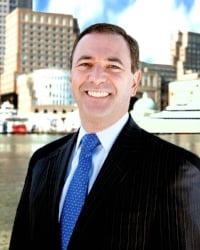Bill Harts is the CEO of Modern Markets Initiative (MMI), an advocacy  organization devoted to the role of technological innovation in creating the world’s best markets. MMI engages and educates public audiences about the value modern market professionals provide to today’s electronic marketplace. Harts is known in the financial services industry as a pioneer of algorithmic trading, as well as an authority on financial market structure and applied technology for trading.
organization devoted to the role of technological innovation in creating the world’s best markets. MMI engages and educates public audiences about the value modern market professionals provide to today’s electronic marketplace. Harts is known in the financial services industry as a pioneer of algorithmic trading, as well as an authority on financial market structure and applied technology for trading.
Q: Thank you very much for being here, Bill. Can you tell us about Modern Markets Initiative? What are your goals?
A: Modern Markets Initiative first came together in late 2013. Our mission has always been to educate people about what high-frequency trading is, how it works and most importantly, how it saves a lot of money for investors and continues to do so every day. Also, we wanted to serve as a resource to let investors and issuers alike understand the important role of high frequency trading in the trading ecosystem.
Q: Whom are you educating? Where are you doing it?
A: Prior to MMI’s formation, there were many misinformed people, which resulted in a lot of negative publicity about high-frequency trading, or HFT, for short. Stories were published that said HFT was costing investors money and harming trading. That is the exact opposite of what HFT has done.
So, our first job was really to get out to the press and explain what HFT does and point out that there has been study after study that proves the beneficial role it has played in helping investors keep money that used to be lost to a very expensive and manual way of trading.
In addition, we began outreach to the institutional buy side. And then we started to reach out to Washington. What we’ve learned over time is that it’s not just about high-frequency trading itself. It really becomes a much broader conversation about market structure, in general.
High-frequency trading firms are the prime trading intermediaries in the market. As such, they are an important resource for regulators trying to determine how to make the markets even better. Because we are such an integral part of modern market structure, you can’t talk about HFT without talking about market structure.
Q: High-frequency trading is still a bit of a black box, even for investor relations professionals. Can you explain it?
A: In the past, you had a specialist who was responsible for your stock, and that specialist was a human being. Even if they were a really good specialist, they could probably only handle two or three very active stocks at a time. And that specialist had to keep a mental ledger of what all their positions were and how they were performing. The collective performance of these positions is what helps a specialist determine what spread to offer on a stock.
If you fast forward to today, a lot of the functions that used to be handled by those specialists have all been automated. Because they’re handled by computers, they trade faster, and pricing has gotten much more accurate and the competition to provide the best price much fiercer.
For example, when I first started in this business, I remember GE, one of the most liquid stocks in the world, often had a 25-cents-per-share bid-ask spread. Today, that same spread is less than a penny. That’s what we mean when we say investors save a tremendous amount of money because of this shift to electronic trading.
This efficiency is why the vast majority of stocks being traded on the New York Stock Exchange are by high-frequency trading firms, known as designated market makers (DMMs). They’re nearly all high-frequency trading firms at this point – GTS, IMC, Citadel, and Virtu.
Q: What do you find are the most common misperceptions you need to re-educate people about?
A: I think most people don’t understand that the primary purpose of most high-frequency trading firms is to make markets and provide liquidity, a job that used to be done by manual intermediaries. That liquidity helps bring buyers and sellers together to make the trade happen.
Another misperception is that somehow there’s slower market data and faster market data, and high-frequency trading firms can take advantage of one or the other. There have been a number of academic studies that dispute that one, as well.
Q: Did the novel “Flash Boys” raise anything you have to fight hard against now?
A: It’s unfortunate, because Michael Lewis is a great author and I enjoy reading his stuff. But on this one, he really dropped the ball on his research. He didn’t speak to any high-frequency trading firms, and a lot of what made it into the book were things that were already known to be false, even when the book was first published.
Today, some of these myths that I’ve been talking about still persist. For example, that a trader can somehow see an order before it gets to the exchange and trade ahead of it. These were known to be untrue, and yet, we still talk to people who aren’t aware of that. They believe that exchanges give certain traders certain unfair advantages. That’s just not true.
Q: ‘Speed bumps’ are an idea promulgated by “Flash Boys,” and they have gained traction with some major markets. What do you want investor relations professionals to know about ‘speed bumps?’ What should they think?
A: Speed bumps create artificial distortions in market structure. Arbitrary delays and staggered markets create more risks to traders. And that risk shows up as wider spreads that make stocks more expensive for investors large and small to buy. That is not good for issuers nor investors.
The SEC has said it will do a lot of research on this in the next year or two. Let’s see what they come up with in terms of data-driven analysis. We had hoped the SEC would do this type of study before it started approving random speed bumps.
What really distresses us about it is it seems to be having a deleterious effect on our overall national market systems. And that’s something that everyone should be concerned about.
Q: In closing, what are the key takeaways you want investor relations professionals to know about high-frequency trading?
A: First, they should absolutely get to know their DMMs. If they’re Nasdaq-listed, they should get to know the important market makers who trade their stock. They should be proactive about it, rather than waiting until it becomes crisis management. If the stock spikes up or spikes down, shareholders may have questions, and they may be calling IR professionals for answers.
Besides that, I want investor relations people to know that high-frequency trading firms generally are making their stock much less expensive to trade for their shareholders – and even for the companies themselves. For example, Vanguard wrote a letter to the SEC saying, because of the changes in market structure and electronic trading, they estimated the average Vanguard investor retired with about 30% more in their retirement account. We believe that’s a fantastic statistic that we’d like to make sure people know about. The third point is that when you have public buybacks and your stock is more liquid, the cost of acquiring those shares will ultimately be much less expensive than in the old days.
Thanks very much for speaking with us, Bill. We appreciate your time.















